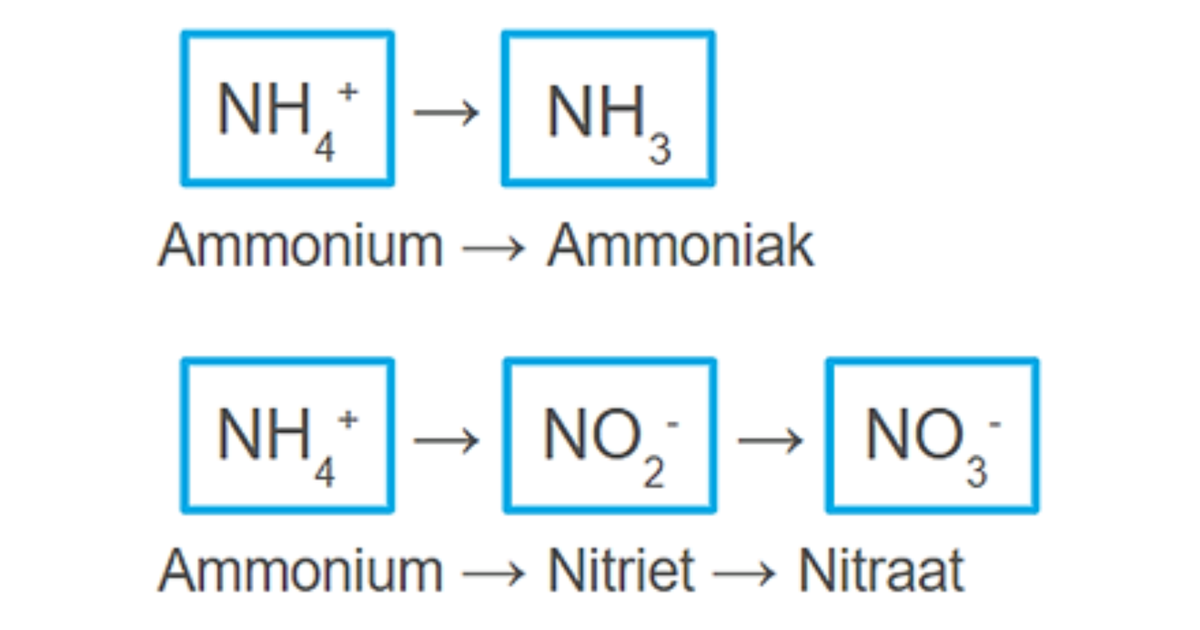Livestock farmers often put a lot of time and energy into optimising rations for cows. Here, much attention is given to feed optimisation but less attention is given to drinking water quality. Yet water does have a large share in cow rations. High-production cows drink about 150 litres a day and for one litre of milk they need three litres of water. The better the quality of drinking water, the more the cows drink, which then leads to higher milk production. One of the parameters involved in drinking water quality is ammonium.
What causes ammonium to enter the water?
Ammonium is released during the decomposition of plant and animal material by bacteria. This is why when groundwater is used in peatlands, more ammonium is found than in other types of soil. This is because peat consists of decomposed plant material. Ammonium can also be released into the water by manure. For example, when manure leaches into groundwater. In addition, water pipes coated with cement release ammonium into the water.
Ammonium in drinking water
An ammonium concentration of up to 2.0 mg/l in cows' drinking water is considered good. If ammonium is high in the water, it can lead to the formation of ammonia in the intestines (Figure 1). In too high concentrations, this can cause intestinal inflammation.
In addition, ammonium can also be converted to nitrate, forming nitrite as an intermediate product (Figure 1). This conversion is dangerous because nitrite can bind to haemoglobin. This is a protein found in the blood that can bind oxygen. It allows oxygen to be transported through the body, but if nitrite binds to haemoglobin, it can no longer bind oxygen. In this way, nitrite causes insufficient oxygen to be transported to the organs. Too high a nitrite concentration can lead to oxygen deprivation and suffocation symptoms, at low concentrations there is a risk of blood pressure drop and kidney damage.
To prevent the aforementioned adverse effects of ammonium, ammonium is rendered harmless in the cow's liver. However, this takes a lot of energy. The cow cannot put this energy into milk production. Ammonium thus indirectly leads to lower farm turnover.
Impact on water taste
Besides ammonium being harmful to cows, it also imparts an unpleasant odour to water. This is the case with water containing more than 1.5 mg/l of ammonium. When the water smells less clean, cows will drink less. This in turn causes the cow to eat less. The low feed intake combined with the lack of water can result in lower milk production.
Influence on efficiency of disinfectants
Ammonium in drinking water also affects the efficiency of disinfectants used. When chlorine-containing agents are used, they can react with the ammonium. As a result, it loses its disinfecting effect. When disinfectants are used to improve water quality, it is therefore important to be aware of the chemical quality of the water.
Ammonium as an indicator
When water is polluted by manure, for example, ammonium is often high in the water. Ammonium can therefore be used as an indicator of pollution. Water pollution often also involves bacteriological pollution. Many bacteria enter the water via manure. Moreover, ammonium can be used by bacteria as a food source. When ammonium levels are high, there is therefore more chance of biofilm formation.
Water quality
To promote water intake, both chemical and bacteriological water quality is important. By periodically analysing the water from the drinking trough ( for example through the GD), you will gain insight into the different parameters of the water. This way, you will know what improvement you can make to increase water quality.
What can Watter do?
If there is a lot of bacteriological contamination in the drinking water, Watter offers the solution. Watter offers sustainable disinfection by means of hypochlorous acid (HOCl). The Watter system makes this disinfectant on site and requires only water, salt and electricity. The disinfectant makes the pipes and drinking troughs free of biofilm. This is already possible with low concentrations. The Watter system thus offers a sustainable improvement of your cows' rations.
Want to know more about the importance of drinking water quality and find out what Watter can do for you?





